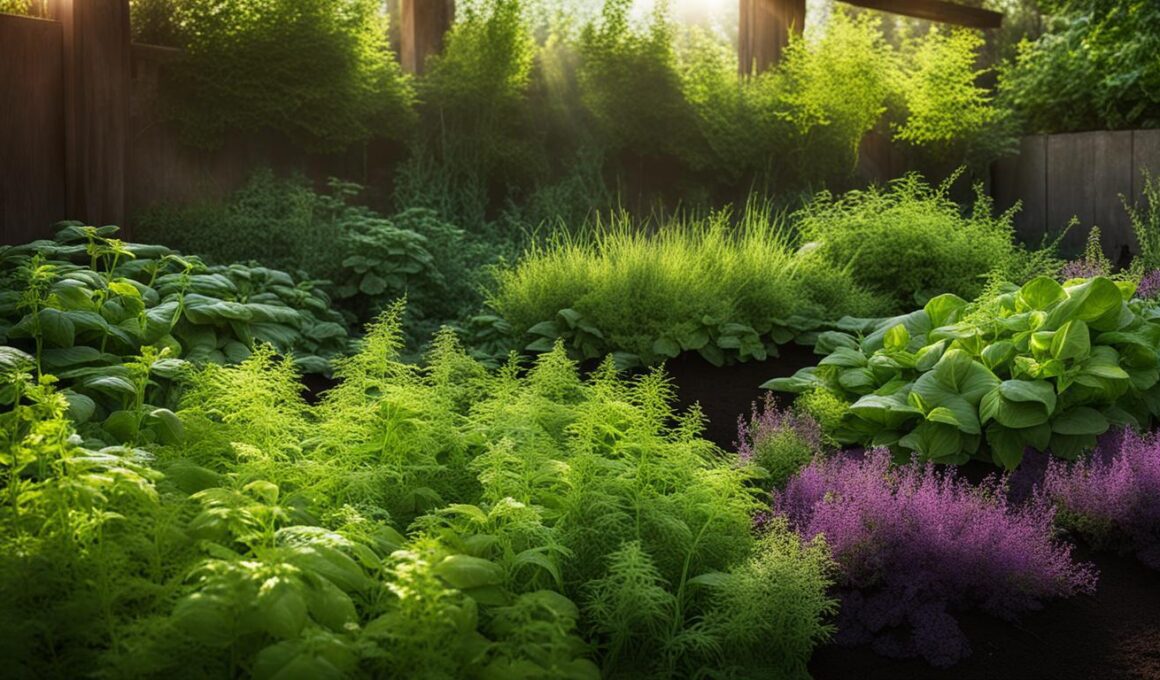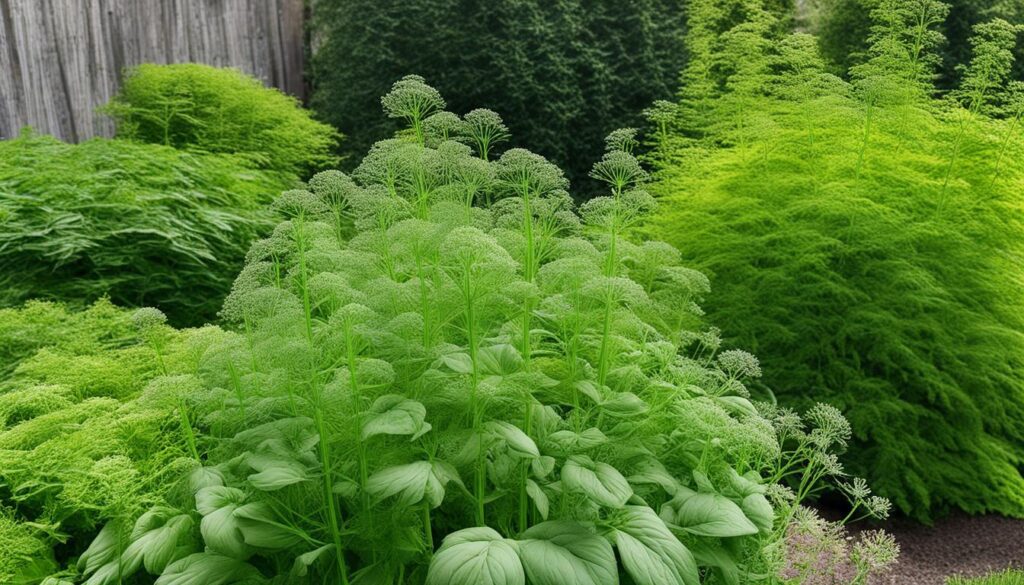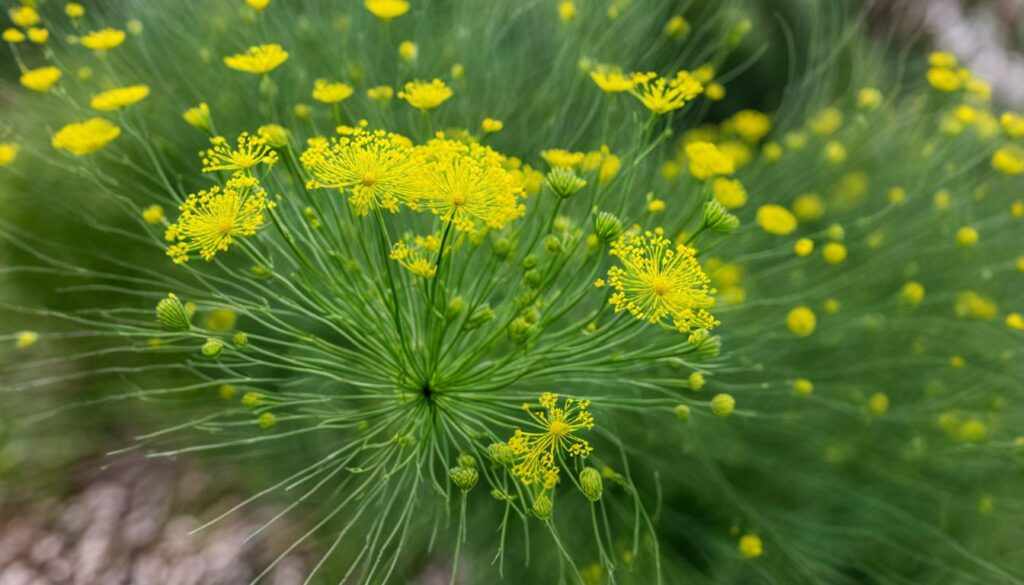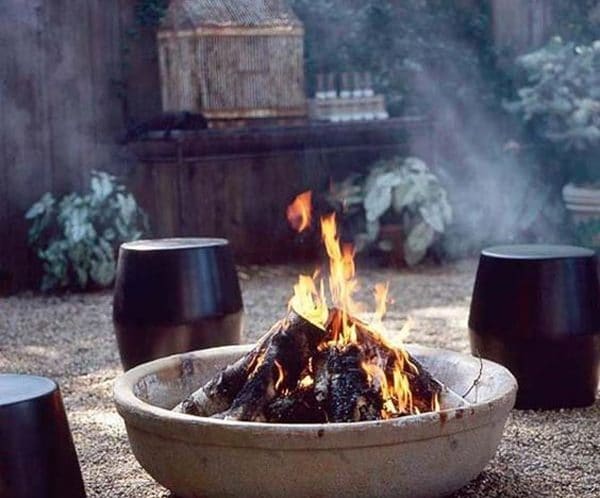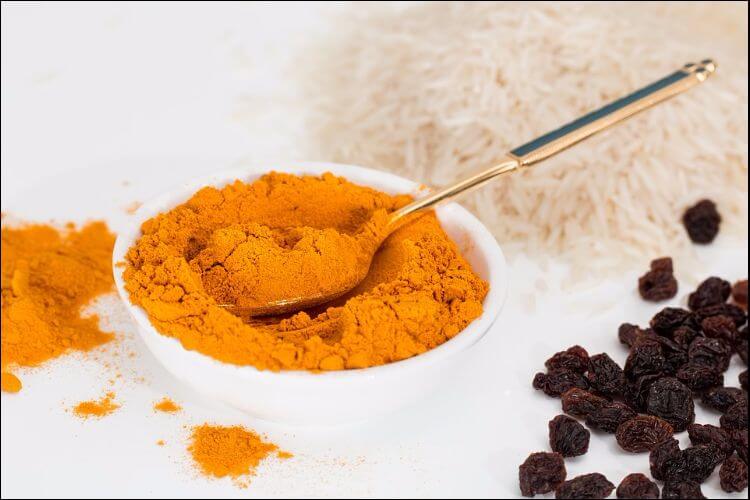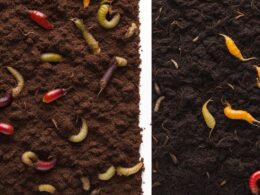Are you a gardening enthusiast looking to enhance the flavors of your produce and create a harmonious garden? Consider growing and pairing basil and dill together in your garden. These two herbs not only have similar growing requirements but also complement each other in terms of taste and pest control. Let’s explore the benefits of companion planting basil and dill and how you can successfully cultivate them together.
Key Takeaways:
- Growing basil and dill together enhances the flavor of your produce and creates a balanced ecosystem in your garden.
- Basil repels unwanted pests and adds a fresh taste to dishes, while dill attracts beneficial insects and repels harmful pests.
- Best companion plants for dill include cabbage, asparagus, basil, cucumbers, onions, and lettuce.
- Plants to avoid growing with dill are tomatoes, carrots, peppers, and mint due to compatibility issues.
- Companion planting with dill attracts pollinators and reduces the need for chemical pesticides.
Best Companion Plants for Dill
Dill is a versatile herb that pairs well with a variety of plants in the garden. By choosing the right companion plants for dill, you can create a thriving garden ecosystem that benefits both the herbs and the surrounding plants. Here are some of the best companion plants to consider:
- Basil: Basil and dill make a great pairing in the garden. Basil repels pests like mosquitoes and flies, while dill attracts beneficial insects like ladybugs and lacewings.
- Cabbage: Planting dill near cabbage can help deter cabbage worms and other pests that can damage the cabbage plants.
- Cucumbers: Dill and cucumbers are natural companions. Dill attracts pollinators like bees, which can improve cucumber fruit production.
- Onions: Dill and onions have a mutually beneficial relationship. Dill attracts beneficial insects that prey on onion pests, helping to keep your onion plants healthy.
- Lettuce: Dill can provide shade to lettuce plants, helping to protect them from the intense sun. Additionally, dill’s strong scent can mask the smell of lettuce, making it less attractive to pests.
By planting these companion plants alongside dill, you can enhance the flavors of your herbs and support the overall health of your garden. The combination of beneficial insects, pest deterrents, and mutually supporting growth habits creates a balanced and harmonious garden environment.
Quote:
“Companion planting with dill can improve the health and productivity of your garden. By choosing the right plants to grow alongside dill, you can create a thriving ecosystem that benefits all of your plants.” – Gardening expert
With the right companion plants by its side, dill can thrive and contribute to a successful garden. Incorporating these plant pairings not only adds beauty and variety to your garden, but also brings practical benefits such as pest control and enhanced crop production. Experiment with different combinations and see how companion planting with dill can transform your garden into a flourishing and bountiful space.
Plants to Avoid Growing with Dill
Dill is a versatile herb that can be grown alongside many plants in the garden. However, there are a few plants that don’t grow well with dill and should be avoided to ensure optimal growth and harvest. Tomatoes, carrots, and peppers are not recommended to be grown with dill as they can hinder its growth or cross-pollinate with it. Dill should also be kept away from mint in indoor pots due to the invasiveness of mint. It’s important to consider the compatibility of plants when planning your garden to avoid any potential negative effects on dill or other crops.
“Dill is not compatible with tomatoes, carrots, peppers, or mint. These plants can have a negative impact on dill’s growth and overall health. It’s best to keep dill separate from these plants to ensure optimal growth and harvest.”
Another consideration when planting dill is its potential for cross-pollination. If you have specific varieties of plants that you want to remain pure, it’s important to keep dill isolated. Dill has the ability to cross-pollinate with certain plants, potentially altering their characteristics or flavors. To maintain the purity of other crops, it’s advisable to keep dill separate or plant it in a different location from those plants.
By avoiding planting dill with incompatible plants and taking precautions against cross-pollination, you can ensure the healthy growth of your dill and other crops. It’s important to plan your garden carefully and consider the specific needs and interactions of each plant to create a thriving and productive garden space.
The Benefits of Companion Planting with Dill
Companion planting with dill offers numerous benefits for your garden. Not only does dill add a unique flavor to your dishes, but it also plays a crucial role as a companion plant. One of the key benefits of planting dill alongside other crops is its ability to attract beneficial pollinators like bees and butterflies. These pollinators help improve the pollination of other plants in your garden, leading to increased productivity and better yields.
But that’s not all. Dill also acts as a natural pest deterrent, repelling unwanted pests such as aphids, spider mites, and cabbage pests. By incorporating dill into your garden, you can reduce the need for chemical pesticides while promoting a healthy and eco-friendly environment.
In addition to its pest-repellent properties, dill can also enhance the flavor of certain companion plants. When grown alongside onions and cucumbers, dill enriches their taste and aroma, creating a delightful culinary experience. The combination of these plants not only benefits your palate but also contributes to a well-balanced and visually appealing garden.
The Role of Dill in Companion Planting
Dill’s role in companion planting extends beyond its culinary benefits. Its delicate yellow flowers and tall stalks serve as a visual attraction, adding beauty to your garden. Dill also acts as a natural trap crop, drawing pests away from other vulnerable plants. This sacrificial plant nature helps protect your other crops from potential harm.
Dill’s strong scent can confuse and deter pests, making it an excellent companion for a wide range of plants. By interplanting dill with susceptible crops, you create a barrier that pests find challenging to navigate.
Moreover, dill’s ability to attract beneficial insects like ladybugs and lacewings provides natural pest control for your garden. These insects feed on harmful pests, effectively reducing their population and preventing infestations.
In summary, companion planting with dill not only enhances the flavor of your dishes but also fosters a healthy and sustainable garden ecosystem. From attracting pollinators to repelling pests and improving plant growth, the benefits of incorporating dill as a companion plant are truly remarkable.
Tips for Successful Companion Planting with Basil and Dill
Successfully growing basil and dill together requires careful consideration of their growing requirements and compatibility with other plants. By following these tips, you can cultivate a harmonious garden that maximizes the benefits of companion planting with these aromatic herbs.
1. Understand their growing requirements:
To ensure healthy growth, both basil and dill thrive in moist soil and cooler temperatures. They prefer moderate fertilizing, so avoid overfeeding them. By providing the right conditions, you can promote optimal growth and flavor development.
2. Plant them together in the same pot or garden bed:
Both basil and dill can be grown side by side in the same container or garden bed. This allows for easier maintenance and ensures that they receive similar amounts of water and sunlight. Just make sure to provide enough space between each plant to allow for proper airflow and prevent overcrowding.
3. Choose compatible companion plants:
When companion planting with basil and dill, consider growing them alongside compatible plants such as cabbage, asparagus, cucumbers, and onions. These plants can benefit from the pest-repellent properties of basil and dill while creating a diverse and visually appealing garden environment.
Tip: “Companion planting with basil and dill can enhance the flavors of your produce and create a balanced ecosystem in your garden.”
4. Regular maintenance is key:
To ensure successful growth, regularly prune your basil and dill plants to promote bushier growth and prevent them from becoming leggy. Water them consistently, keeping in mind their preference for moist soil. By providing proper care, you can enjoy a bountiful harvest of fresh and flavorful herbs.
Choosing the Right Varieties of Basil and Dill
When it comes to selecting the right varieties of basil and dill for your garden, you have a wide range of options to choose from. Each cultivar offers a unique flavor profile and growth habit, allowing you to tailor your herb selection to suit your personal preferences and culinary needs.
Basil Varieties:
- Sweet Basil: This is the most common variety of basil, known for its tender leaves and sweet, slightly peppery flavor. It is a versatile herb that can be used in a variety of dishes, including pesto, salads, and sauces.
- Thai Basil: With its distinct licorice-like flavor and purple-tinged leaves, Thai basil adds a unique twist to Asian-inspired dishes. It pairs well with spicy curries, stir-fries, and noodle dishes.
- Lemon Basil: As the name suggests, lemon basil has a refreshing lemony scent and flavor. It is a wonderful addition to salads, seafood dishes, and herbal teas.
Dill Varieties:
- Bouquet Dill: This is the most common dill variety, known for its feathery foliage and strong flavor. It is perfect for pickling, seasoning fish, and adding a fresh taste to salads.
- Fernleaf Dill: This compact dill variety is ideal for small gardens or container planting. It has a milder flavor compared to bouquet dill and is great for garnishing and flavoring sauces.
- Mammoth Dill: Mammoth dill is prized for its large and flavorful leaves. It is commonly used in pickling and makes a bold statement in the garden with its impressive height.
By carefully selecting the basil and dill varieties that best suit your taste and culinary preferences, you can create a diverse herb garden that provides an abundance of flavors and aromas to enhance your dishes.
Harvesting and Using Basil and Dill
Once your basil and dill plants have reached the appropriate size and maturity, it’s time to start harvesting these flavorful herbs. Harvesting basil and dill is a simple process that allows you to enjoy their fresh taste in a variety of culinary creations. When it comes to basil, you have the option to pluck individual leaves as needed or harvest whole stems.
To harvest basil leaves, locate a pair of mature leaves on the stem and use your fingers or small scissors to remove them. Be sure to pluck the leaves from the top of the stem first, as this encourages new growth. If you prefer to harvest whole stems of basil, make a clean cut just above a set of leaves. This method allows you to harvest a larger quantity of basil at once, perfect for making pesto or infusing oils.
When it comes to harvesting dill, you’ll want to cut the entire stem once the plant has reached its desired height. Use a pair of sharp scissors or garden shears to make a clean cut just above the base of the plant. Harvesting the entire stem helps encourage new growth and ensures you have plenty of dill for all your culinary needs.
Once harvested, both basil and dill can be used immediately in a wide range of dishes. From adding fresh basil to salads and soups to using dill in pickling or seasoning fish, these herbs add a burst of flavor and aroma to any recipe. If you have an abundance of basil and dill, consider preserving them for later use. Drying or freezing the herbs allows you to enjoy their flavors year-round. Simply hang bundles of basil in a cool, dry place to dry, or spread the leaves on a baking sheet and place them in the freezer for a few hours before transferring them to a sealed container.
Culinary Uses of Basil and Dill
- Use fresh basil leaves to create a classic Caprese salad with tomatoes, mozzarella, and balsamic glaze.
- Add chopped dill to creamy dips or dressings for a tangy and herbaceous flavor.
- Infuse olive oil with basil and drizzle it over roasted vegetables or grilled meats.
- Mix chopped dill into yogurt or sour cream for a refreshing dip to serve with fresh vegetables or pita bread.
- Combine basil and dill with lemon juice, garlic, and olive oil to create a flavorful marinade for seafood.
- Sprinkle fresh basil over homemade pizzas or pasta dishes just before serving to add a burst of freshness.
- Add dill to brine when pickling cucumbers or other vegetables for a deliciously tangy and herb-infused flavor.
“Basil and dill are versatile herbs that can transform ordinary dishes into extraordinary culinary creations.”
Whether you’re harvesting basil and dill from your garden or purchasing them from a local market, these herbs are sure to elevate your cooking to new heights. From fresh salads to aromatic sauces, the possibilities are endless when it comes to using basil and dill in your favorite recipes. So, get creative in the kitchen and savor the flavors of these delightful herbs!
Conclusion
Growing basil and dill together in your garden brings a multitude of benefits. These herbs not only complement each other in terms of flavor, but they also create a harmonious garden ecosystem that promotes healthy growth and productivity. By companion planting basil and dill, you can enhance the taste of your produce, naturally deter pests, and attract beneficial pollinators.
The flavor and aroma of basil add a refreshing touch to various dishes, while dill’s distinctive taste enhances recipes like pickles and soups. Furthermore, basil acts as a natural pest repellent, keeping unwanted insects at bay, while dill attracts beneficial insects like bees and butterflies, aiding in the pollination process. By incorporating these herbs into your garden, you can reduce the need for chemical pesticides and create a more sustainable gardening approach.
In summary, the benefits of companion planting basil and dill are numerous. Not only do these herbs thrive when planted together, but they also enhance the overall health and productivity of your garden. So, why not give it a try? Enjoy the fresh flavors, create a vibrant garden, and experience the joys of growing basil and dill side by side.
Can Basil and Dill Be Grown Together in the Same Garden?
Yes, growing mint and basil together is possible. Both herbs require similar growing conditions, such as well-drained soil and plenty of sunlight. However, it’s essential to give them enough space to thrive and avoid overcrowding. Plant basil and dill together in the same garden, ensuring they have ample room to grow.
FAQ
Can basil and dill be planted together?
Yes, basil and dill can be planted together in the same pot or garden bed.
What are the best companion plants for dill?
Some of the best companion plants for dill include cabbage, asparagus, basil, cucumbers, onions, and lettuce.
Are there any plants that should not be grown with dill?
Tomatoes, carrots, and peppers are not recommended to be grown with dill. Dill should also be kept away from mint in indoor pots.
What are the benefits of companion planting with dill?
Companion planting with dill attracts beneficial pollinators, repels pests, and enhances the flavors of companion plants.
How can I successfully grow basil and dill together?
To grow basil and dill together, consider their growing requirements, compatible companion plants, and regular maintenance.
How do I choose the right varieties of basil and dill?
Choose basil and dill varieties based on their different flavors and growth habits, depending on your preference and intended use.
How can I harvest and use basil and dill?
Basil leaves can be plucked individually or harvested as whole stems, while dill can be cut by the entire stem. Both herbs can be used immediately in various dishes or preserved for later use.





